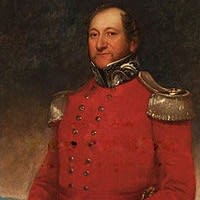Land of My Birth – Sir Moshe Montefiore was an extremely wealthy Jewish banker who lived a respectable life in London. But when he reached the age of 40, he decided to dedicate his life to Jews in general and to the settlement of Eretz Yisrael in particular. Montefiore visited the land seven times. The following is taken from the description of his visit to Chevron on his second visit to the land (in 1839), “which was written by his wife Yehudit in English, when she traveled with her husband, Sir Moshe Montefiore, to the holy land, and it was then translated into Hebrew by one who loves the holy tongue.”
“We went through very narrow roads, as can be seen in all ancient cities, filled with stones and garbage. The houses in the city have been built without any glory or nobility. But there is still charm on the faces of our brothers who live here, whose hearts and bones are brimming over with the love for the land of their ancestors… and whose joy all day long is the Torah… The maidens marry at an age of 14 or 15. They carry flowers on their heads and their hair is like a royal hue of purple on their necks… We were never as happy to see a pleasant place as at this site, which is close to the graves of our ancestors…”
Montefiore was naturally greeted in royal fashion by the local community, and all the different groups competed in heaping greater and greater honors on their guest. He dedicated part of his visit to helping the inhabitants of the city. Lists of poor people were brought to him, describing their wants and their needs, and he gave them generous contributions.
Montefiore was also greatly respected by the civil authorities, so much so that the governor of Chevron came to him and apologized that he had not rushed out to greet him when he arrived in the city. Montefiore asked the governor for permission to visit the Machpelah Cave, but he replied that this was impossible and it would not happen. Instead, the governor proposed that he visit other prominent graves, such as those of Avner Ben Ner, Ruth, Yishai, the father of David, and Otniel Ben Knaz. But two days later the governor gave in to the pleading and he accompanied the honored guest and his entourage to the Machpelah, the gravesite of our ancestors. And this is how Yehudit described what happened there:
“When we came to the site of their worship, which is built on the Machpelah Cave, we found a large group of Yishmaelites, led by a priest with a long beard and curly hair. He turned his head and raised his hand towards heaven, burning in sharp anger, and he gave out a loud and bitter shout. While we were still frightened by this sound, the noise of the crowd grew even stronger. But in spite of this we gathered our courage and went on to the site of the grave. And the governor showed us the entrance doors to the cave where our ancestors are buried. We saw that he almost fainted from his fright of the crowd while he spoke to us, as the tumult grew every minute. And our brothers of Yisrael, who stood outside, were struck by the foolish crowds. So we said, ‘It is a good idea to return home.’ And the governor excused himself by saying, ‘What could I do about the crowd, which has been led astray by religious fervor?'”
And indeed the Arabs had found an excuse to fall upon the Jews and injure many of them, and the community was seized with great fear. Montefiore sent an urgent letter to the governor of Jerusalem asking him to send a force to provide protection from the rioters. And the next day about twenty armed men arrived on horseback, with instructions to protect the entourage of the important guest. The riders galloped into the city firing their guns, frightening the excited mob, and bringing peace and quiet back to Chevron. Yehudit Montefiore ended her enthusiastic description of the visit as follows:
“And everybody was extremely happy, giving us thanks from the bottom of their hearts. We thank the Almighty in heaven, from whom we have received everything and who created all of this.”
Source: Avraham Yaari, “Travels in Eretz Yisrael”. Reprinted with permission from Zomet Institute (www.zomet.org.il).
The words of this author reflect his/her own opinions and do not necessarily represent the official position of the Orthodox Union.
